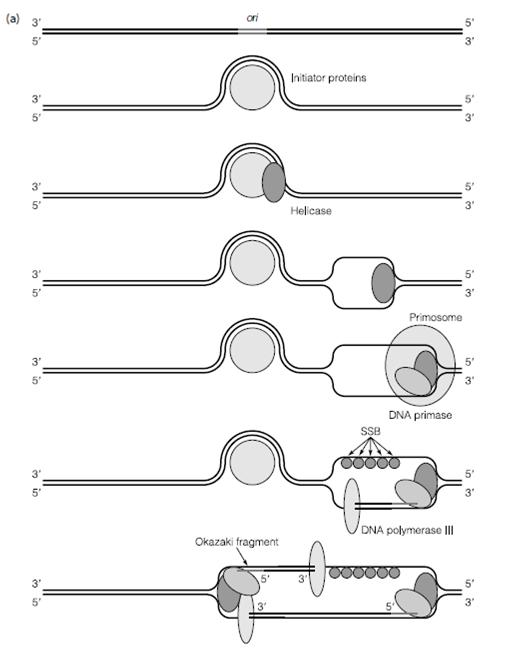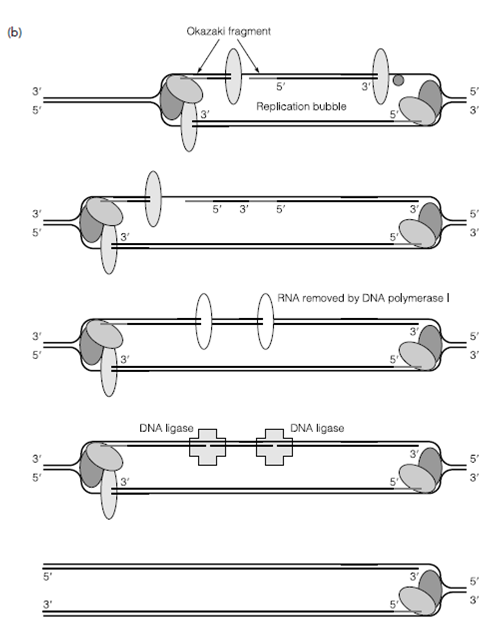Proofreading
At each stage of DNA replication the sequence of the newly synthesized DNA is checked to see in which it exactly matches the template strand a function known as proofreading. The First incorporation of each nucleotide is dictated so which it exactly matches the complementary template base just through the shape of the DNA polymerase III active site. A separate active site in the enzyme then checks the base pairing again after incorporation as the polymerase moves down the template strand. Similarly DNA polymerase I has a proofreading domain in several organisms though not in E. coli to ensure that the replacement of RNA with DNA is accomplished without error in Figure 3. DNA polymerase I also participates in the continuous checking of the replicated double-stranded genome as part of the mutation repair systems described in Section F7.

Figure 2. DNA replication.
termination of synthesis and resolution of replicated circular genomes The termination of synthesis of a copy of a circular Bacterial genome is signaled through a region coded within the DNA. This site is at a 6 o’clock position on the genome if the ori is at 12 o’clock. A terminator utilization substrate binds at this site stopping the movement of the two replisomes. This might appear to be the end of the replication process but the cell is now faced with the challenge of separating the two complete chromosomes from one another. Without an effective means of resolving the two chromosomes they will remain intertwined with one another. Two intertwined genomes close to one another are prone to generalized recombination and must be separated as quickly as possible. A short DNA sequence known as dif is found in the center of the termination region and here the proteins XerC and XerD bind both double helices and, via a transient DNA or protein complex known as the Holliday junction cut and resplice the

Figure 2. DNA replication (continued).
DNA to form two separate circular chromosomes. Therefore a process of site-specific recombination stops more widespread generalized recombination.